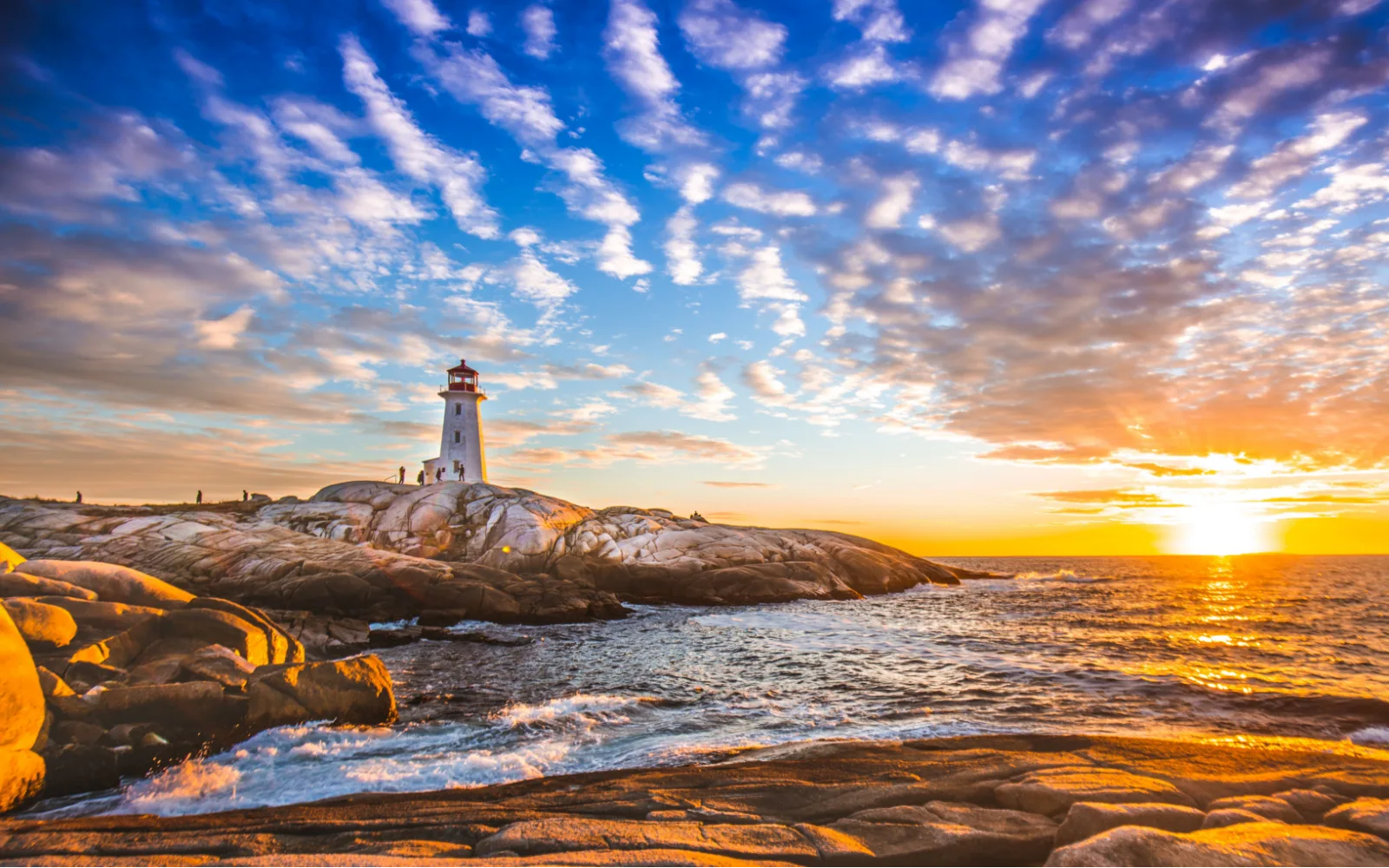What's the best time to visit Nova Scotia?
The best time to visit Nova Scotia is in July and August, with perfect weather for beach activities and festivals like the Antigonish Highland Games and Halifax Jazz Festival.
Temperatures range from 54°F to 74°F, ideal for enjoying the outdoors and the warm Atlantic waters. Despite being the peak tourist season, Nova Scotia remains comfortably uncrowded, offering a relaxed and enjoyable experience.
Explore a myriad of local vintages. Try sea kayaking. Enjoy the sea breeze. Experience memorable traditions. Spend the night at a campsite. Hit the beach. Have a picnic by the ocean. Go on a culinary quest.
And you get to do and see all of these — all you have to do is plan a trip to Nova Scotia, one of the most exciting Canadian provinces. That said, before you organize a trip to this awesome province, you need to know what awaits you in each season.
In our guide, we’re spilling our secrets on the best time to visit Nova Scotia, as well as budget expectations, things to do, and so much more!
The Overall Best Time to Visit Nova Scotia
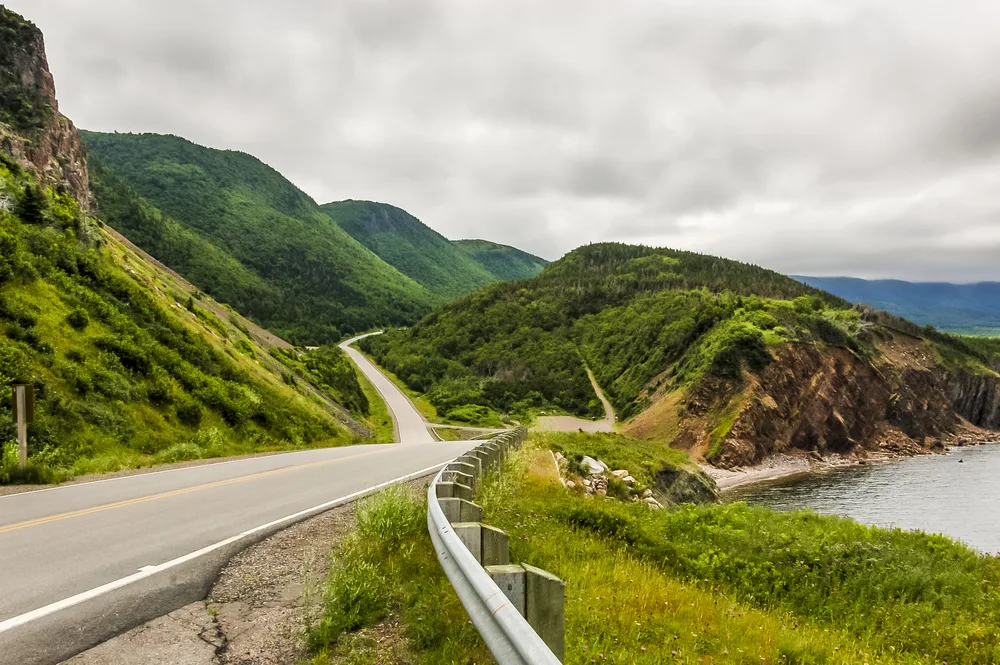
Ken Felepchuk/Shutterstock
The best time to visit Nova Scotia is in the high season, in July or August. In July, the temperatures in Halifax, Nova Scotia’s capital, vary between an average high of 74°F and an average low of 54°F. August sees average temperatures fluctuating between 74°F and 60°F.
Summer is the ideal time to sunbathe on some of the beaches, go sailing, or enjoy kayaking. Local festivals are also in full swing, and the entire region tries to make the most of the pleasant summer climate. If you go hiking, be on alert for mosquitoes.
July travelers should consider attending the Antigonish Highland Games and embrace the event’s Scottish spirit; the Halifax Jazz Festival is a must for jazz culture enthusiasts; the Stan Rogers Folk Festival invites you to embark on a musical adventure unlike anything you’ve ever seen (or heard!).
If you have any hopes about touching Nova Scotian waters, August is the time to take a dip in the otherwise cool Atlantic, which goes all the way up to 72°F during the summer months.
Those looking for some entertainment should add the Halifax Busker Festival to their Nova Scotian itinerary. Being home to the oldest Acadian festival in the world, the Nova Scotian Festival Acadien promises activities and fun for visitors of all ages.
Yet another August event, the Digby Scallop Days sees a vibrant live program, locals competing in the Scallop Shucking competitions, and the well-known Ceremony of Flags to wrap up the festival.
Lastly, note that as this is Nova Scotia’s busiest season, booking your accommodation ahead of time is recommended. That said, there are no drastic differences when it comes to high and low seasons in Nova Scotia.
Yes, summer is the tourist peak season which sees higher temperatures and an influx of visitors, but Nova Scotia is neither London nor Rome — the crowds are always manageable, and even the busiest roads are within normal limits.
Cheapest Time to Visit Nova Scotia
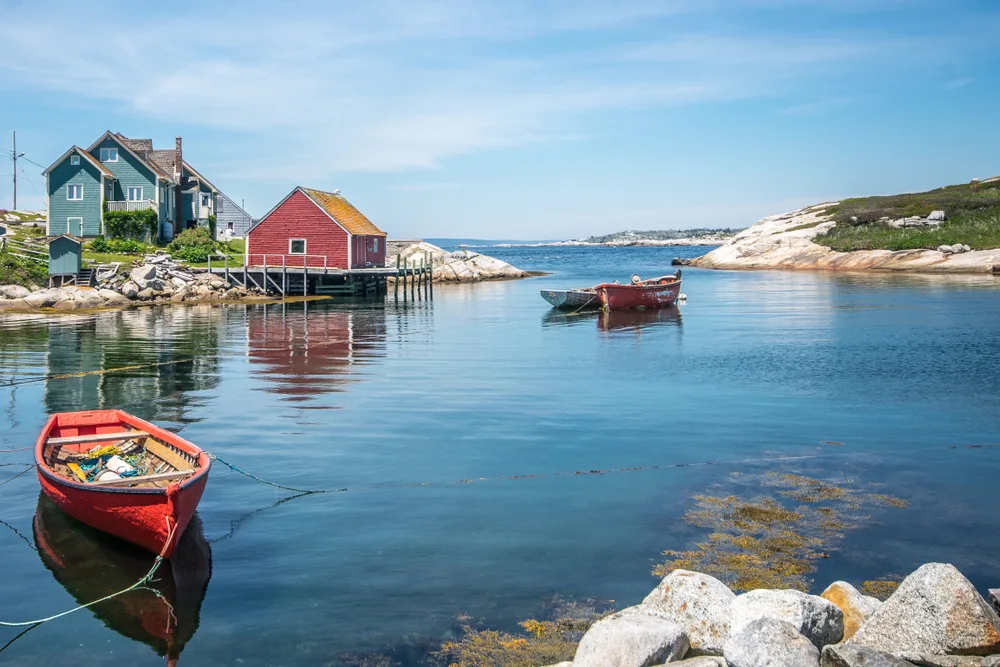
Sam and Brian/Shutterstock
Budget-minded folks should consider booking a trip anytime from November through April, as this is Nova Scotia’s low season.
In November, the temperatures range between an average high of 47°F and an average low of 35°F. Being a rainy month, November isn’t a particularly popular time to visit, which translates into many lodging options and a budget-friendly trip.
December has average temperatures varying between a maximum of 37°F and a minimum of 24°F. Snow slowly appears and covers the province, and while December is arguably the cheapest month to visit Nova Scotia, the Christmas season is celebrated with local markets, which do see plenty of locals coalesce.
In April, the temperatures range between an average high of 48°F and an average low of 34°F. If Easter falls sometime in April, you’re in for a holiday treat, as there are numerous Easter fairs and workshops you can attend, making this time especially suitable for a family holiday!
All in all, Nova Scotia may have extreme winters with frigid temperatures, but the affordable accommodation prices, as well as the homey atmosphere, seem to compensate for it.
Least Busy Time to Visit Nova Scotia
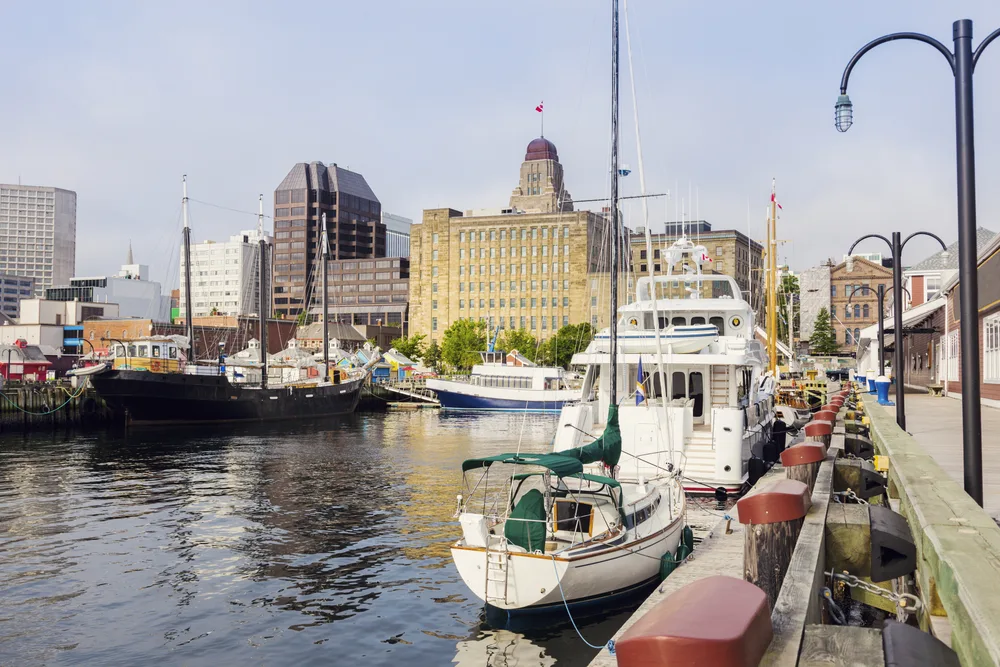
Henryk Sadura/Shutterstock
The least busy time to go to Nova Scotia is either in May and June or September and October.
The May–June period precedes the vibrant summer season, and the September–October period provides visitors with the relaxing vibe they need after summer is all done and gone.
Both shoulder seasons are perfect for travelers trying to escape winter’s cold and summer’s hyperactive schedule. The climate is ideal for recreational activities such as camping or hiking, although the fall months require more endurance.
May visitors should expect temperatures ranging between an average high of 58°F and an average low of 42°F. The month is reserved for the Annapolis Valley Apple Blossom Festival.
June temperatures hover around an average high of 67°F during the day and an average low of 51°F at night. Both locals and visitors get excited for the upcoming Privateer Days, as they’re given a chance to “go back in time” to 1780.
September temperatures vary between a maximum of 67°F and a minimum of 53°F. Key events include the Atlantic International Film Festival and the Canadian Deep Roots Festival.
October visitors witness average temperatures fluctuate between 56°F and 44°F. The month lures travelers who wish to marvel at fall’s changing colors.
Apart from the fall foliage, live music coming from bars and pubs also attracts people’s attention — all because of the Celtic Colors Festival. A unique celebration, the Celtic Colors Festival boasts a plethora of activities, events, and world-class concerts.
Worst Time to Visit Nova Scotia
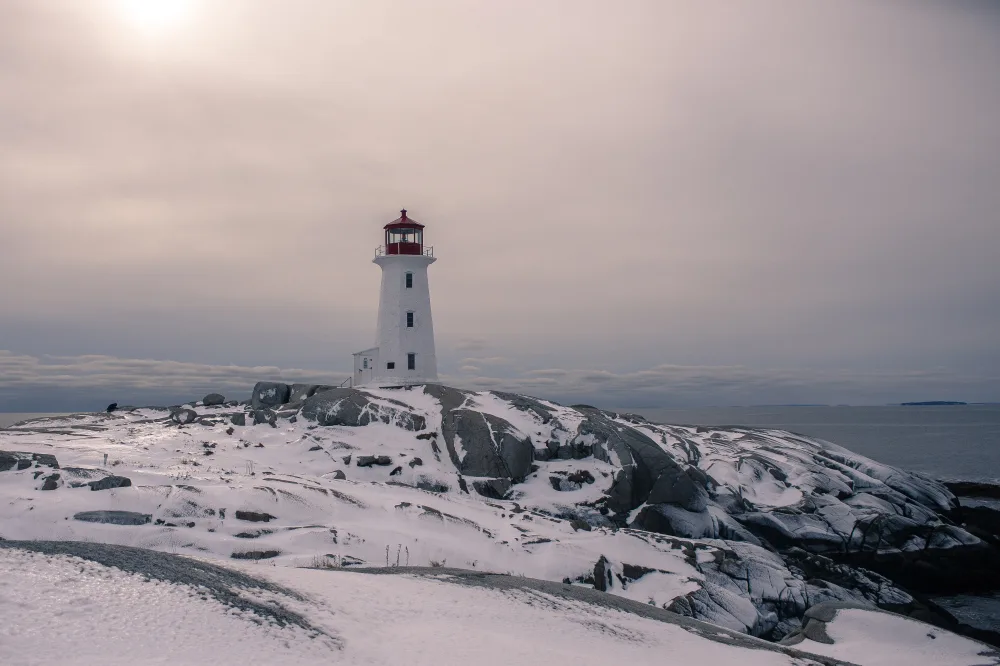
Theccvl/Shutterstock
While Nova Scotia is lovely at all times, January, February, and March are absolutely unbearable when it comes to harsh weather conditions.
This January–March period sees temperatures ranging from an average low of 17°F and an average high of 38°F. January is also the month that sees the most rainfall.
Unless you’re coming from a cold country yourself, you’re going to have a hard time enjoying your Nova Scotia itinerary at this time.
That said, weather-wise, these months are ideal for drinking hot cocoa and going to warm restaurants. If you’re courageous enough to stand side by side with the cruel weather, then ice skating, skiing, and snowshoeing are activities absolutely worth considering.
If you happen to visit Nova Scotia in February, you can’t miss the South Shore Lobster Crawl. It’s — hands down — the event that “saves” the otherwise monotonous winter season.
From the sensational lobster rolls sandwich to soothe your inner foodie to live music events that warm your soul, the South Shore Lobster Crawl gets better and better with each passing year.
Those thirsty for something new and refreshing should mark their calendars for the Nova Scotia Icewine Festival. A premier annual winter wine festival, the Nova Scotia Icewine Festival event features wine that will keep you coming back for more.
While March sees a slight increase in temperatures, it’s still not enough to make the weather enjoyable, so the same winter mindset and activities apply.
Things to Consider

Eduardo Ramirez Sanchez/Shutterstock
Now that you know what the best time to visit Nova Scotia is, let’s see what else you should keep in mind before you go:
- If you visit in summer, pack light to medium weight clothing. If you go in winter, bring heavyweight clothing. Waterproof clothing items come in handy for each reason.
- Apart from Halifax, don’t expect dynamic nightlife. That said, you can hear Gaelic songs and Scottish bagpipes all over the region at concerts or in pubs and restaurants.
- Nova Scotia is generally very safe, so if we were you, we wouldn’t worry too much. Of course, the risk for petty crimes such as bag snatching is always present, but that goes for any location. In fact, we’d rather urge you to take the necessary caution while hiking or during other outdoor activities, which brings us to the next point.
- If you go hiking, wear long-sleeved shirts and pants, as many ticks carry Lyme disease. Not to scare you, but Nova Scotia is a region with the second-highest number of ticks in Canada.
- Coming across ATMs is easy in populated areas but not in more isolated regions, so make sure to bring some cash with you at all times.
- If you’re trying to avoid heavier traffic on the roads and people-packed pubs, don’t visit during public holidays. So, keep your eyes peeled for the following Canadian holidays: New Year, Good Friday, Easter Monday, Victoria Day, Canada Day, Civic Holiday, Labour Day, National Day for Truth and Reconciliation, Thanksgiving Day, Remembrance Day, Christmas Day, and Boxing Day.
- If you’d like to save money, consider staying with a local (Couchsurfing is a solid option), go on a free walking tour (check the Halifax Free Walking Tours, but tip your guide at the end!), look for Halifax Happy Hours info, and purchase the Nova Scotia Museum pass for some great deals.
So, What’s the Best Time to Visit Nova Scotia?
All in all, the best time to visit Nova Scotia is a resounding always, as it’s a great destination for all kinds of preferences, interests, and above all, budgets, so if you get the chance to visit it, don’t hesitate.
In fact, why not book your Canadian trip today? Happy travels!



